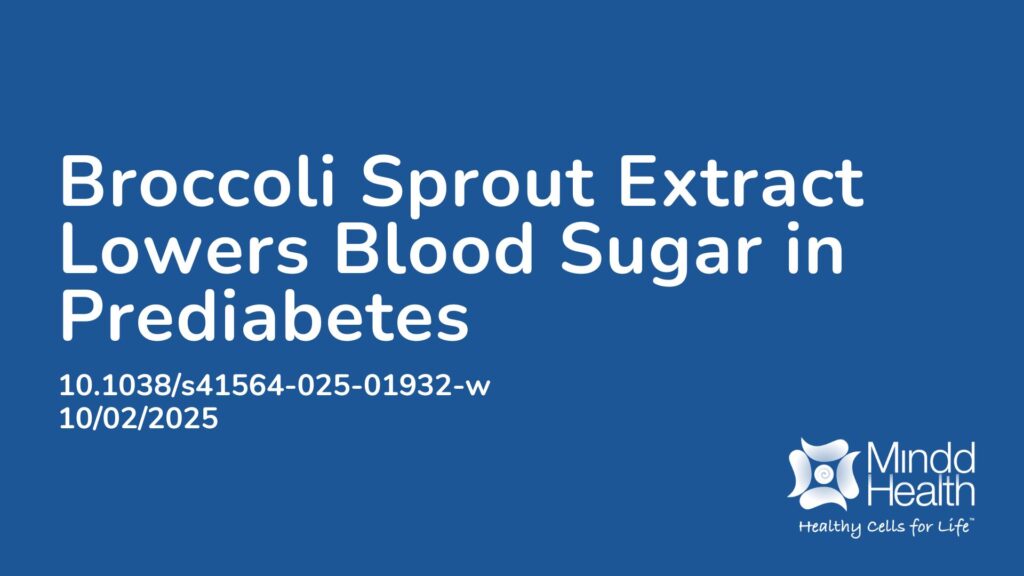Summary:
This study looked at whether broccoli sprout extract (BSE), which contains a compound called sulforaphane that can lower blood sugar, could help people with prediabetes. In the trial, 74 people with prediabetes who hadn’t taken diabetes medication before were given either BSE or a placebo once a day for 12 weeks. The main goal was to see if BSE could lower fasting blood sugar by 0.3 mmol/L more than the placebo. BSE didn’t reach this goal, but it did lower fasting blood sugar by 0.2 mmol/L on average, which was a statistically significant change. Some people responded better than others, especially those who were mildly obese, had insulin resistance, and lower insulin production. These participants showed a 0.4 mmol/L drop in blood sugar. Researchers also found that these participants had a different gut microbiota profile compared to non-responders to the BSE, as they had a specific gut bacteria gene that is known to help activate sulforaphane, leading to higher sulforaphane levels in their blood. The study suggests that how well BSE works may depend on a person’s gut bacteria and overall health. More research is needed to confirm these findings.
Abstract:
More effective treatments are needed for impaired fasting glucose or glucose intolerance, known as prediabetes. Sulforaphane is an isothiocyanate that reduces hepatic gluconeogenesis in individuals with type 2 diabetes and is well tolerated when provided as a broccoli sprout extract (BSE). Here we report a randomized, double-blind, placebo-controlled trial in which drug-naive individuals with prediabetes were treated with BSE (n = 35) or placebo (n = 39) once daily for 12 weeks. The primary outcome was a 0.3 mmol l−1 reduction in fasting blood glucose compared with placebo from baseline to week 12. Gastro-intestinal side effects but no severe adverse events were observed in response to treatment. BSE did not meet the prespecified primary outcome, and the overall effect in individuals with prediabetes was a 0.2 mmol l−1 reduction in fasting blood glucose (95% confidence interval −0.44 to −0.01; P = 0.04). Exploratory analyses to identify subgroups revealed that individuals with mild obesity, low insulin resistance and reduced insulin secretion had a pronounced response (0.4 mmol l−1 reduction) and were consequently referred to as responders. Gut microbiota analysis further revealed an association between baseline gut microbiota and pathophysiology and that responders had a different gut microbiota composition. Genomic analyses confirmed that responders had a higher abundance of a Bacteroides-encoded transcriptional regulator required for the conversion of the inactive precursor to bioactive sulforaphane. The abundance of this gene operon correlated with sulforaphane serum concentration. These findings suggest a combined influence of host pathophysiology and gut microbiota on metabolic treatment response, and exploratory analyses need to be confirmed in future trials. ClinicalTrials.gov registration: NCT03763240.
Article Publication Date: 10/02/2025
DOI: 10.1038/s41564-025-01932-w



